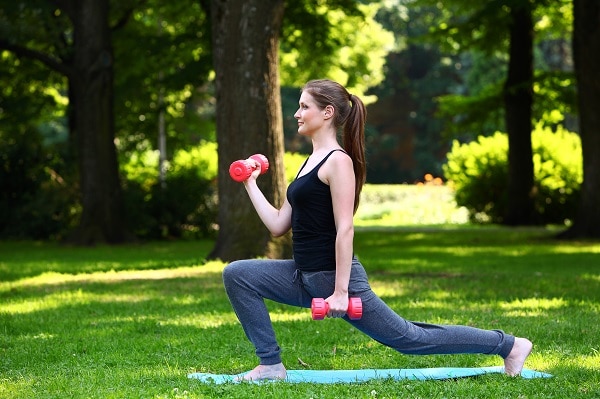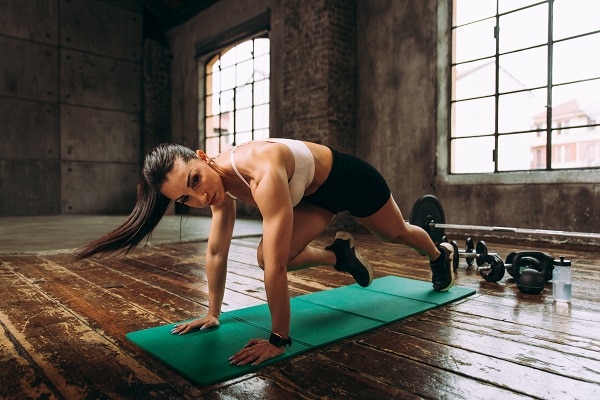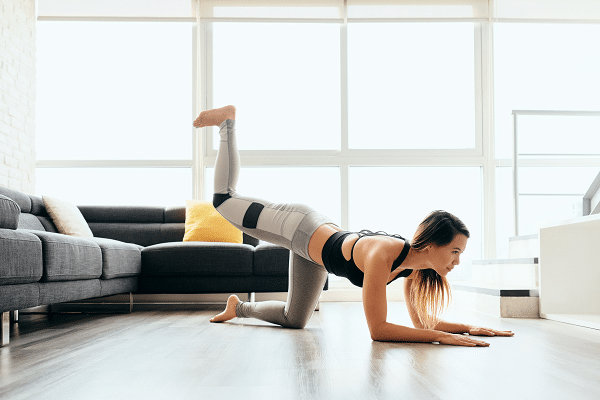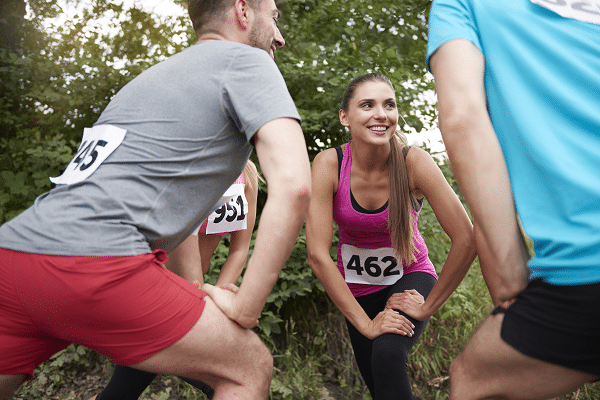Do you love running but hate the pain in your muscles afterward? Many people experience muscle pain after a run. This is because they don’t stretch properly before their run. When you run, your muscles contract and tighten. If you don’t stretch before running, your muscles will stay tight, and the pain will increase. So to help you avoid this uncomfortable feeling, this blog post will give you a few different stretches you should do before a run. That way, you can focus on your run and not the pain in your muscles.
Contents
Arm Swings

Stretching is an important part of any exercise routine, and running is no exception. While it may seem like a good idea to just jump right into your run, taking a few minutes to do some simple arm swing stretches can help you avoid injuries and improve your performance. Here’s how it works: by swinging your arms back and forth, you help to loosen up the muscles in your shoulders, chest, and back.
This increased range of motion can help you run with better form, which in turn can lead to improved speed and endurance. In addition, stretching your shoulder, chest, and back muscles before a run can help to prevent injuries by warming up these muscles and joints.
Side Lunges

Another great way to get a good stretch before you run is by doing side lunges. Start by standing with your feet shoulder-width apart, then take a big step to the side with your right leg. As you lower your body down into a lunge, be sure to keep your left leg straight and your right knee aligned over your right ankle. Push off with your right leg to return to the starting position, then repeat on the other side. Doing 10-15 reps of side lunges before a run will help you loosen up your muscles and improve your range of motion, making you less likely to injure yourself during your run.
Straight Leg Lateral Raise

When you go for a run, your muscles are put under a lot of strain. Without proper preparation, this can lead to fatigue, cramping, and eventually injury. That’s why it’s important to do a few stretches before you begin your run. One stretch that is particularly beneficial for runners is the straight leg lateral raise. This stretch targets the muscles in the thighs and buttocks, which are often tight after sitting for long periods of time.
To do the stretch, simply stand with your feet shoulder-width apart and raise one leg out to the side. Hold the position for 30 seconds, then switch sides. You should feel a gentle stretch in your outer thigh. Depending on your level of flexibility, you may also feel a stretch in your lower back.
Straight Leg Kicks

Before you lace up your running shoes and head out the door, you may also want to consider doing a straight leg kick stretch. This simple stretch helps to loosen the muscles in your hamstrings and lower back, making it easier for you to run with proper form. To do the stretch, stand tall with your feet together. Keeping your leg straight, kick one leg forward as high as you can. Reach down and grab your ankle with your hand, then pull your leg back until you feel a gentle stretch in the back of your thigh.
Hold the stretch for 20-30 seconds before repeating on the other side. You should feel a bit looser after doing this stretch, allowing you to have better endurance throughout your run.
Butt Kicks

As you probably know by now, stretching is important before you start running. However, there are still a few more stretches that can be beneficial, one of which is do butt kicks. To do this stretch, simply stand with your feet together and bend your knees slightly. Keeping your back straight, kick your right heel back so that it touches your butt.
Then switch sides and repeat with your left leg. You should feel a gentle stretch in your hamstring and gluteal muscles. This stretch is especially important for runners because it helps to lengthen the muscles that are used during the running motion. As a result, doing a butt kick stretch before you run can help to prevent injuries and improve your performance.
Standing Hip Rotation

When you go for a run, your muscles and tendons go through a lot of stress. This includes the muscles around your hips. One great stretch that you can do to prevent soreness in your hips is a standing hip rotation. Start by standing with your feet shoulder-width apart and your hands on your hips. Rotate your hips in a circular motion, making sure to keep your shoulders and upper body still. Do 10 rotations in each direction. You should feel a gentle stretch in your hips, glutes, and groin area.
This stretch will help to loosen up your hip muscles and prepare them for the impact of running. Additionally, it will help to improve your range of motion and enable you to take longer strides while running.
Calf Stretch

Finally, no pre-run stretching routine would be complete without a calf stretch. This stretch is important because it helps to lengthen the Achilles tendon, which can often become tight during running. To do the calf stretch, stand with your feet shoulder-width apart and place your hands on a wall or other surface in front of you. Keeping your back leg straight, slowly lean forward until you feel a stretch in your calf.
Hold the position for 20-30 seconds before repeating on the other side. You should feel a gentle stretch in the back of your lower leg. However, if you haven’t done much stretching before, you may not feel much at first. Don’t worry; with time and practice, you will become more flexible and will be able to feel the stretch more. Just be sure to listen to your body and stop if you start to feel any pain.
Conclusion
Stretching before a run is important because it helps to warm up your muscles and prepare them for the impact of running. Additionally, stretching can help to improve your range of motion and prevent injuries. There are many different stretches that you can do before a run, but some of the most effective are the ones included on this list. So next time you’re getting ready for a run, be sure to take the time to do some stretching first. Your muscles will thank you!


